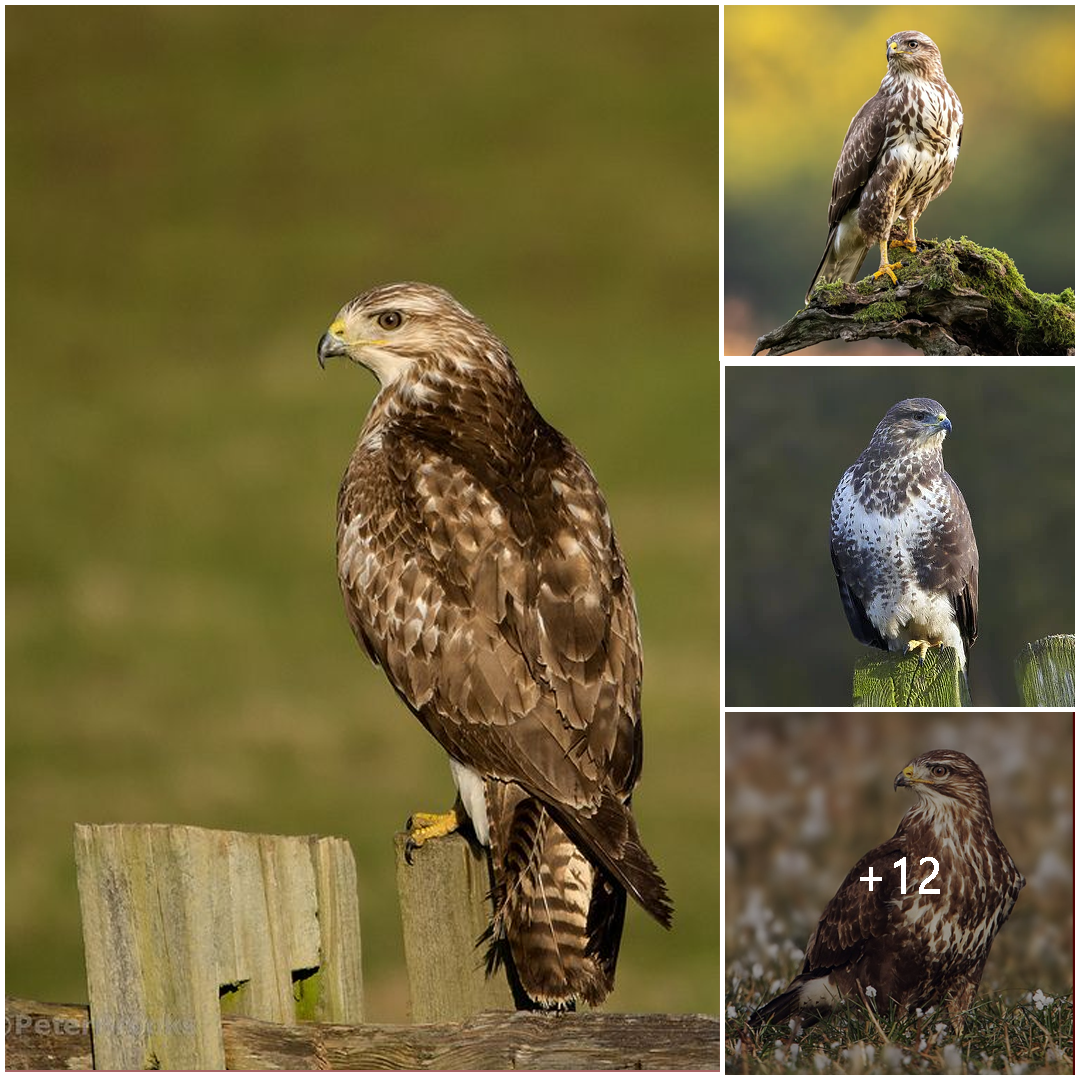
The Buzzard: A Majestic Hunter of the Skies
The buzzard, scientifically known as Buteo buteo, is a magnificent bird of prey belonging to the family Accipitridae. Renowned for its keen eyesight, graceful flight, and formidable hunting skills, the buzzard is a common sight across various habitats in Europe, Asia, and parts of Africa.
Appearance and Characteristics: Buzzards are medium-sized raptors with a wingspan ranging from 110 to 130 centimeters (approximately 43 to 51 inches). They typically weigh between 600 to 1400 grams (approximately 1.3 to 3.1 pounds) and exhibit sexual dimorphism, with females being slightly larger than males. Their plumage varies greatly in coloration, ranging from shades of brown, gray, and black to lighter hues with intricate patterns. One distinctive feature of the buzzard is its broad wings and short, broad tail, which aids in maneuverability during flight.
Habitat and Distribution: Buzzards are versatile birds that inhabit a wide range of habitats, including forests, woodlands, moors, farmlands, and mountainous regions. They are commonly found throughout Europe, from the Iberian Peninsula to Scandinavia, as well as in parts of Asia and North Africa. Buzzards are known for their adaptability to various environments, allowing them to thrive in both rural and urban landscapes.
Behavior and Hunting: As opportunistic hunters, buzzards primarily feed on small mammals, birds, insects, and carrion. They rely on their exceptional eyesight to detect prey from great distances while soaring high in the sky. When hunting, buzzards employ a combination of perching, hovering, and soaring techniques to locate and capture their prey. They often perch on elevated vantage points, such as trees or utility poles, from where they can scan the surrounding area for potential prey. Once a target is spotted, the buzzard will swoop down with impressive speed and accuracy to seize its quarry with its sharp talons.
Breeding and Nesting: During the breeding season, which typically occurs between March and July, buzzards engage in elaborate courtship displays characterized by aerial acrobatics and vocalizations. They construct large stick nests in trees, cliffs, or occasionally on the ground, lining them with softer materials such as grass and feathers. The female buzzard typically lays two to four eggs, which are incubated for approximately 30 to 35 days. Both parents take turns incubating the eggs and caring for the young chicks, which fledge after about 45 to 50 days.
Conservation Status: The buzzard is considered a species of least concern according to the International Union for Conservation of Nature (IUCN). While they face threats such as habitat loss, persecution, and collisions with vehicles, buzzard populations remain stable and widespread across their range. Conservation efforts focused on habitat preservation and legal protection have helped ensure the continued survival of these magnificent birds of prey.
Conclusion: In conclusion, the buzzard stands as a symbol of strength, adaptability, and resilience in the avian world. With its awe-inspiring aerial prowess and vital ecological role as a top predator, the buzzard plays a crucial part in maintaining the balance of ecosystems. As we continue to appreciate and safeguard the natural world, let us cherish the majestic presence of the buzzard soaring high above, embodying the spirit of freedom and wildness in the skies.





